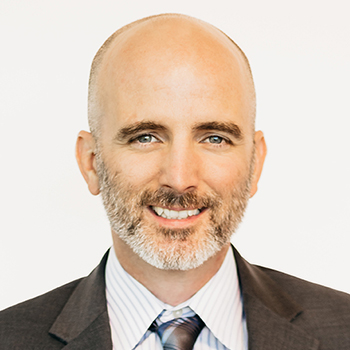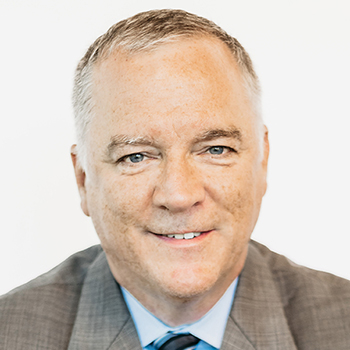
PACE centers on the belief that it is better for the well-being of seniors with chronic care needs, and their families, to be served in the community whenever possible. By providing or coordinating all needed medical and supportive services through an interdisciplinary team (IDT), PACE programs are able to provide the entire continuum of care and services to older adults with chronic care needs, while enabling them to maintain independence in their homes for as long as possible. And, PACE continues to grow with no signs of slowing down from the momentum of the past couple of years. Since January 2020, 33 programs have opened, and some estimates predict more than 40 new programs could open in the next few years. With changes in market preference and the continued growth of PACE, many organizations are considering becoming sponsors of a PACE program. But how do you know if starting a PACE program is right for your organization?
This post addresses some of the common questions regarding whether an organization is a good fit for PACE sponsorship.
Can I compete with another PACE program in similar service areas?
The ability to compete in service areas is up to the state. Some states—such as California, Massachusetts, and New York—allow competition, but they may not allow it in all markets. The state of Washington allows a maximum of two providers per ZIP code, but only in King County. Although the number of states allowing competition is minimal, there has been more openness in recent years to consider it.
Can PACE cross state lines?
No, PACE is a three-way agreement between the PACE Organization, the Centers for Medicare & Medicaid Services (CMS), and the State Administering Agency.
Are PACE service areas determined by ZIP code or county?
Service area definitions are up to the state. Most states leave it up to the PACE Organization and allow either a combination of ZIP codes and/or counties. However, some states do require county-level definitions. It is important to contact the State Administering Agency to determine what is standard in your state.
How large of a service area can a PACE program serve?
Generally, no more than 45-minute drive times are preferred. The state may have different standards, such as California requiring 45 minutes at 8 a.m. in Los Angeles County, or 60 minutes in smaller markets. If a state requires county-level service area definitions, there may be more flexibility due to the size of the counties. Regardless, all PACE participants will need access to the PACE center, and the further they live from the PACE center, the lower the likelihood they will enroll into the program, and the greater the travel costs to the PACE organization.
How many PACE program enrollees do we need to be profitable?
There are many factors that determine the break-even census, including but not limited to state Medicaid capitation rates, the number of non-dual participants enrolled in the program, local labor market conditions, participant service utilization, and fixed and variable costs associated with the PACE center. Positive cash flow typically occurs with an enrollment between 100 and 150 participants, but this is highly variable due to the above factors.
What percentage of the market can we anticipate for our PACE program?
Nationally, on average, 9.4 percent of those individuals meeting PACE enrollment criteria enroll into PACE. The median is 10.1 percent. The national penetration for programs that have exclusivity to their service areas is 9.7 percent, while for programs that at least partially compete in the service area it is 9.1 percent. Programs that compete in less than half of their market average 9.7 percent, while programs that compete in over half average 8.6 percent. Generally speaking, 10 percent is a good target.1
Are enrollments in PACE programs capped?
Some states do have enrollment caps. It will be important to check with your State Administering Agency to determine if your state does or does not.
What are the most common reasons for PACE disenrollment?
Most participants remain in PACE once they enroll into the program. The most common reason for disenrollment is death. Outside of death, a common reason is the participant moves outside of the service area and no longer meets PACE enrollment criteria.
What are the biggest competitors to PACE?
Competition has evolved since PACE first began. Other Medicaid home- and community-based services (HCBS) waiver options are competitive since these programs may have the same enrollment criteria and individuals cannot be enrolled into PACE and another program. Special Needs Plans, other PACE programs, and even potentially adult day health care centers may compete for similar individuals.
Who sponsors PACE programs?
There are many different types of sponsors of PACE programs. Hospitals/health systems are the most common sponsor at 26 percent of current programs, followed by long-term services and supports (LTSS) agencies (25 percent).2 Federally Qualified Health Centers and partnerships are the fastest growing sponsorships. The common factor is all sponsors already serve seniors, particularly frail dual eligibles, in some capacity.
How much does it cost to start a PACE program?
The cost to start a PACE program is not insignificant and highly variable. The capital needed to develop and operate PACE can range from $5 million to $15 million. This wide range is due to the variability in capital needed to develop the PACE center. Capital needed to fund start-up costs and working capital is consistently in the $4 million to $6 million range, but the building costs are highly variable.
How large of a PACE center do we need?
The general rule of thumb is that a 15,000 square foot PACE center will accommodate a maximum daily attendance of 100 and a total enrollment of 250. These assumptions can vary dramatically, however, based mainly on facility design and PACE center attendance frequency.
How long does it take to open a PACE program?
Generally, it takes about 18 months from start to finish to open a PACE program. If a provider has been awarded a service area due to a request for proposal (RFP) award, the program may be required to open by a certain date. California programs can only open on January 1 or July 1, which requires programs to stay on track or have significant delays in planned openings. It is not uncommon for the full timeline to take as much as 24 months, depending on competing priorities or construction/renovation timelines.
What are the factors that most commonly delay the opening of a PACE program?
The most common reason for delay in the development timeline is PACE center construction delays. Other reasons for delay include provider network development, staff recruitment, and application reviews at the state and/or federal level.
Is PACE growing?
PACE has grown substantially over the past few years. In fact, 39 percent of currently operating programs have opened in the past 10 years, and it is estimated PACE programs will increase by another 33 percent over the next four years.3
Is my state open to PACE expansion?
PACE is currently operational in 32 states and the District of Columbia. Many states are open to PACE expansion, but not all states are expanding. It will be important to contact the State Administering Agency to determine your state’s status.
How are PACE programs paid?
PACE programs receive funding through capitation payments from CMS for Medicare for Parts A, B, and D and Medicaid funding through the state. Medicare typically represents about 40–50 percent of total capitation revenues and Medicaid about 50–60 percent. Private pay and VA contracts account for less than 1 percent of national payment, with dual eligibles accounting for nearly 82 percent of overall enrollees.4
I still have questions on whether or not PACE is right for my organization. Who do I contact?
We are happy to discuss your PACE questions. Please reach out to begin your PACE exploration!
For More Information
As a National PACE Association Technical Assistance Center, Health Dimensions Group (HDG) has successfully assisted many organizations with PACE market and financial feasibility studies, program development and implementation support, and operational improvement. If you would like to discuss if PACE is right for your organization or learn how HDG can assist you in exploring PACE as a solution in today’s challenging health care environment, please contact us at 763.537.5700 or info@hdgi1.com and visit our website.







